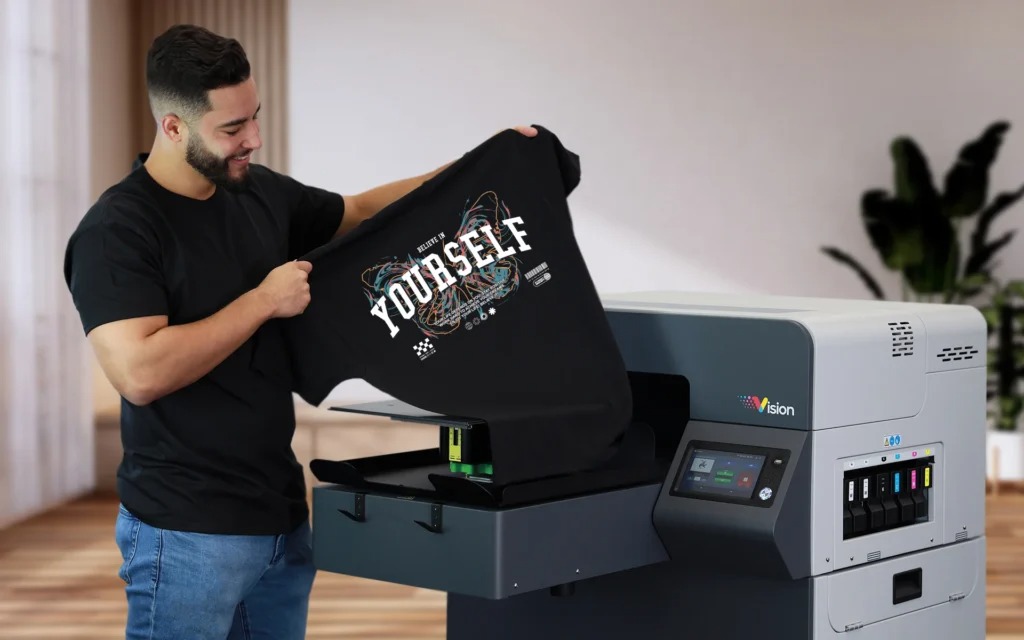T-shirt printing has become a popular and profitable business, as well as a creative hobby for many. Whether you’re looking to create custom designs for personal use or start your own T-shirt printing business, understanding the different methods, tools, and processes involved is crucial to achieving the best results tshirt printer. This guide will break down everything you need to know about T-shirt printing, from the types of printers to the techniques and materials used.
What is T-shirt Printing?
T-shirt printing is the process of transferring designs, logos, or artwork onto fabric, most commonly T-shirts. There are several techniques available, each with its own benefits and limitations. The primary goal of T-shirt printing is to create vibrant, durable, and high-quality designs that stand out and last through regular wear and washing.
Types of T-shirt Printing Methods
There are several popular methods for printing designs on T-shirts. Below are the most commonly used techniques:
1. Screen Printing
Screen printing, also known as silk screening, is one of the oldest and most widely used methods in the T-shirt printing industry. In this technique, a stencil (or screen) is created for each color in the design. Ink is then pressed through the screen onto the fabric using a squeegee. Each color requires a separate screen and layer of ink.
Pros:
-
High-quality and durable prints.
-
Cost-effective for bulk orders.
-
Vibrant colors that last.
Cons:
-
Setup costs can be high.
-
Best suited for designs with fewer colors.
2. Direct-to-Garment (DTG) Printing
Direct-to-garment printing is a relatively modern method that uses inkjet technology to print designs directly onto the fabric. It’s ideal for intricate designs, including those with many colors or gradients. DTG printers are like advanced home printers, but instead of printing on paper, they print directly onto the fabric.
Pros:
-
High-quality, full-color prints.
-
No need for screens or setup time.
-
Ideal for small print runs.
Cons:
-
Can be slower than other methods.
-
Works best on cotton fabrics.
-
More expensive for large orders.
3. Heat Transfer Printing
Heat transfer printing involves printing a design onto a special transfer paper, which is then applied to the T-shirt using heat and pressure. There are different types of heat transfer methods, such as vinyl transfers and sublimation.
Pros:
-
Great for full-color designs and photographs.
-
Ideal for small batches and personalized prints.
-
Easy to use with minimal setup.
Cons:
-
The prints can fade over time.
-
Not as durable as screen printing.
-
The material might feel less flexible than other methods.
4. Vinyl Cutting
Vinyl cutting is a method where designs are created from a solid sheet of vinyl and then cut out using a vinyl cutter. The design is then heat-pressed onto the T-shirt. This technique is best for simple designs like logos, lettering, and graphics.
Pros:
-
Great for single-color designs and lettering.
-
Durable and long-lasting prints.
-
No setup required for each new design.
Cons:
-
Not suitable for full-color or complex designs.
-
Can be time-consuming for detailed designs.
5. Sublimation Printing
Sublimation is a specialized heat transfer process that uses heat to transfer dye onto fabric. The ink becomes a gas when heated and bonds with the fibers of the fabric, creating vibrant, long-lasting prints. However, sublimation works best with synthetic fabrics like polyester.
Pros:
-
Creates vibrant and durable designs.
-
Prints are permanent and won’t crack or peel.
-
Great for all-over prints.
Cons:
-
Works best with polyester or synthetic fabrics.
-
Not ideal for dark-colored fabrics.
Choosing the Right Printer for Your Needs
When it comes to T-shirt printing, choosing the right printer depends on your specific needs, such as volume, budget, and type of designs you want to create. Here’s a breakdown of the best printer types for each method:
1. Screen Printing Machines
-
Ideal for large-scale production.
-
Expensive but cost-effective for mass orders.
-
Great for printing basic to complex designs in bulk.
2. DTG Printers
-
Best for intricate and full-color designs.
-
Perfect for small to medium print runs.
-
Can be used for direct-to-garment printing on various fabrics.
3. Vinyl Cutters
-
Best for simple, solid designs and lettering.
-
Affordable and compact.
-
Good for small businesses or hobbyists.
4. Heat Press Machines
-
Used for heat transfer printing and sublimation.
-
Versatile and affordable.
-
Works well for personal use and small batches.
5. Sublimation Printers
-
Best for printing on polyester fabrics.
-
Ideal for creating high-quality, full-color designs.
-
Great for creating all-over prints.
Materials and Equipment for T-shirt Printing
Apart from printers, the materials and equipment you need to consider include:
-
T-shirts: Cotton, polyester, or cotton-blend fabrics are common choices.
-
Inks: Water-based inks, plastisol inks, sublimation inks, and solvent-based inks are used depending on the printing method.
-
Heat Press: Essential for heat transfer and sublimation printing.
-
Vinyl Sheets: Used for vinyl cutting and heat pressing.
-
Transfer Paper: Required for heat transfer printing.
